Velella Sightings On California Beaches
By admin • • Experiences •
Reading Time: 11 mins
Catch a glimpse of the stunning blue Velella velella along California’s shores. Learn what they are, why they wash ashore, and when and where you can spot them.
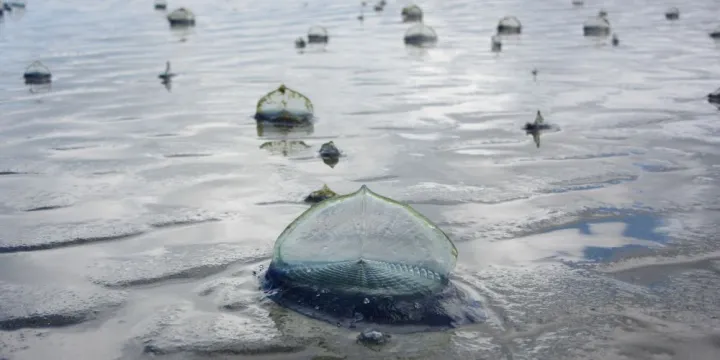
Visitors walking along California’s beaches this season have been met with a surprising sight: thousands of tiny blue sea creatures, which California locals call Velella velella. These bright blue discs, often seen glistening under the sun, have been washing ashore in large numbers along the coastline. Also known as by-the-wind sailors, they float across the ocean’s surface with a small, clear sail that catches the wind. When strong breezes push them toward land, the beaches turn into a sea of vivid blue, leaving beachgoers amazed and reaching for their cameras. Scientists say these creatures, though delicate, play an important part in the ocean and are completely harmless to humans. Their stunning colour and drifting nature make them one of the most mesmerising marine sights of the season.
In this blog, you will gain complete knowledge about what Velella are, why they wash up on California beaches, and where you can spot them. You will also explore some of the top beaches for Velella sightings in California, including Zuma Beach, Bolinas Beach, Pacifica State Beach, Monterey area beaches, and Point Reyes National Seashore. Plus, you will learn whether Velella are harmful to humans or pets, their important role in the ocean ecosystem, and the best times and places to see these stunning by-the-wind sailors beach drifters along the coast.
What Is Velella?
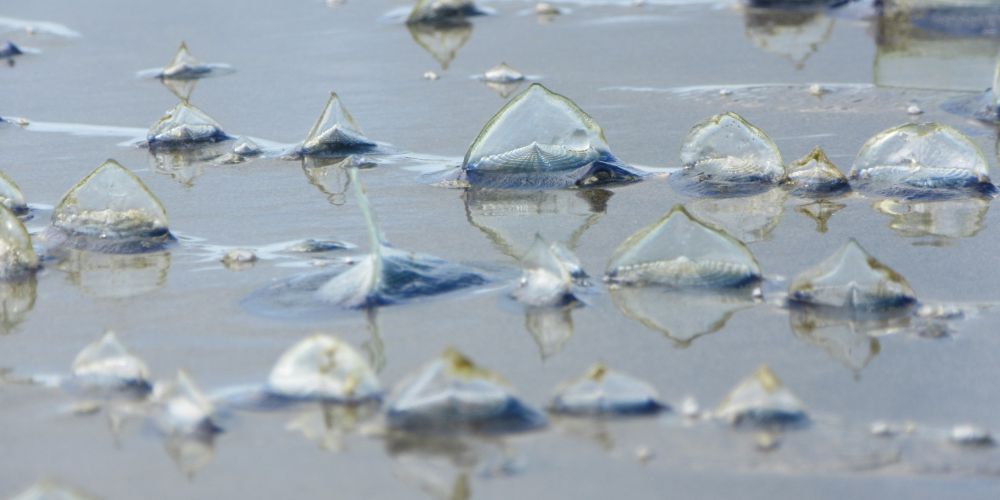
Velella velella, explained as one of the ocean’s most fascinating drifters, it is often mistaken for a jellyfish but is actually a type of hydrozoan, belonging to the same group as corals and sea anemones. Commonly called the by-the-wind sailor, this colonial animal lives on the surface of the open ocean, travelling wherever the wind and waves carry it. Each Velella is not a single creature but a colony of small, connected polyps that work together to feed, protect, and reproduce. Unlike true jellyfish that can swim, Velella relies completely on the wind and surface currents to move across the sea.
When describing what Velella is, it has a deep blue, oval-shaped float that can grow up to 7 to 10 centimetres long. Its most unique feature is a transparent sail that stands upright, helping it glide across the water’s surface. These by-the-wind sailors, marine life use tiny stinging tentacles to catch plankton and other small organisms for food, and are often seen in warm and temperate oceans around the world.
Why Velella Wash Up On California Beaches
The Velella strandings in California often happen because these small blue drifters depend entirely on wind and water to move. Each Velella has a tiny sail that catches the wind, helping it float across the surface of the ocean. When strong winds blow toward the shore, these light organisms are pushed closer to land. Along the coast, changing ocean currents, Velella California, and springtime wind patterns can create perfect conditions for mass beachings. This is why large numbers of them often appear on beaches during spring or early summer.
During this season, the coastal winds shift, and nutrient-rich upwellings bring plenty of plankton for them to feed on, allowing their numbers to grow. However, when the winds turn onshore, these large groups get swept toward the beaches. Warmer ocean waters and changing climate patterns may also increase how often these strandings occur, making spring Velella beaching events more common in recent years.
Top Beaches For Velella Sightings
If you want to spot Velella, visit some of California’s most scenic beaches, where these blue drifters often wash ashore during spring, especially after strong coastal winds and changing ocean currents.
1. Zuma Beach
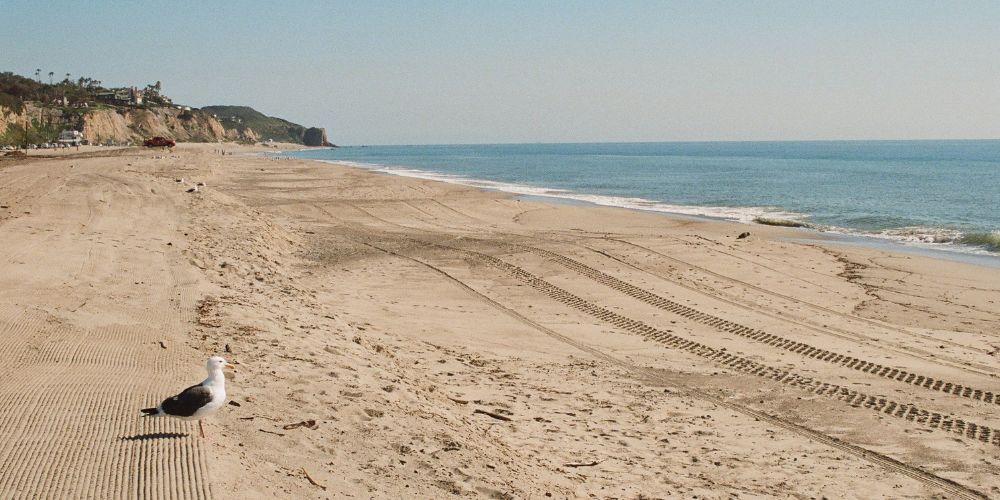
Zuma Beach in Malibu is one of the most common spots for Velella velella sightings along the Southern California coast. Its wide stretch of sand and open exposure to the Pacific Ocean make it a natural landing area for these fascinating blue drifters. During spring, when strong onshore winds blow steadily across the water, large groups of by-the-wind sailors are often pushed ashore, creating a bright blue line along the tide. Visitors and photographers often report mass sightings, especially after windy days or warm ocean conditions. Nearby areas such as Westward Beach and Broad Beach have also experienced similar events, making Zuma Beach a must-visit location for those hoping to witness the beauty of Velella strandings in California.
2. Bolinas Beach
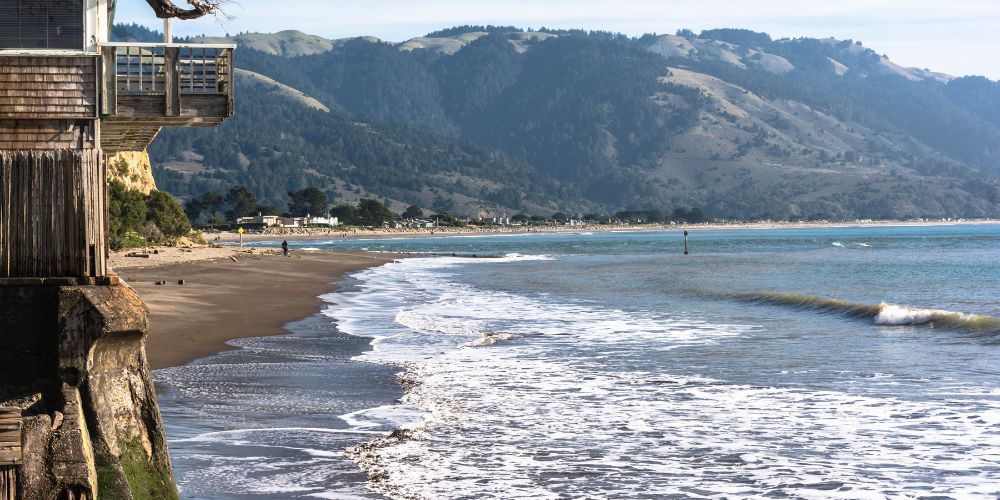
Bolinas Beach in Marin County is another well-known spot for Velella velella sightings, especially during the spring and early summer months. Its open coastal position makes it highly exposed to changing wind patterns that often carry these floating creatures from offshore waters onto the sand. When the conditions are right, beachgoers can see thousands or even millions of by-the-wind sailors washed up along the shoreline, turning the beach into a striking blue display. The strandings are more common after periods of windy weather or mild ocean temperatures, which encourage larger offshore populations. Bolinas Beach and nearby coastal areas have become popular destinations for nature lovers who enjoy witnessing the fascinating spring Velella beaching events up close.
3. Pacifica State Beach
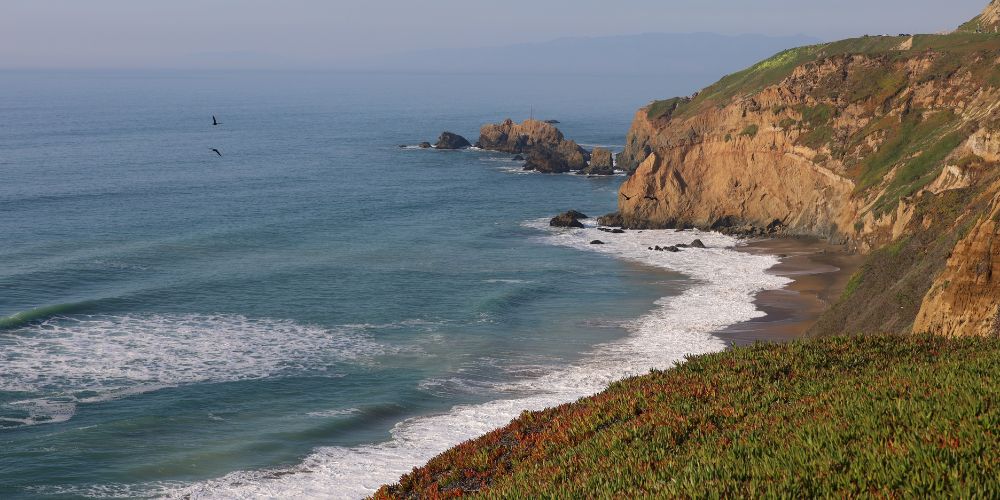
Pacifica State Beach, located along the San Mateo County coastline, is one of the most frequent spots for Velella velella strandings in Northern California. Its wide, open shore faces directly into the Pacific Ocean, making it highly exposed to strong onshore winds that guide these tiny by-the-wind sailors onto the sand. During the spring, when ocean upwelling brings nutrient-rich water to the surface, large blooms of plankton attract more Velella to the area. As wind and current patterns shift, many are carried ashore, often covering long stretches of the beach in bright blue. Visitors have reported seeing millions of Velella along Pacifica and nearby beaches, turning the coastline into a fascinating natural scene during spring Velella beaching events.
4. Monterey Area Beaches
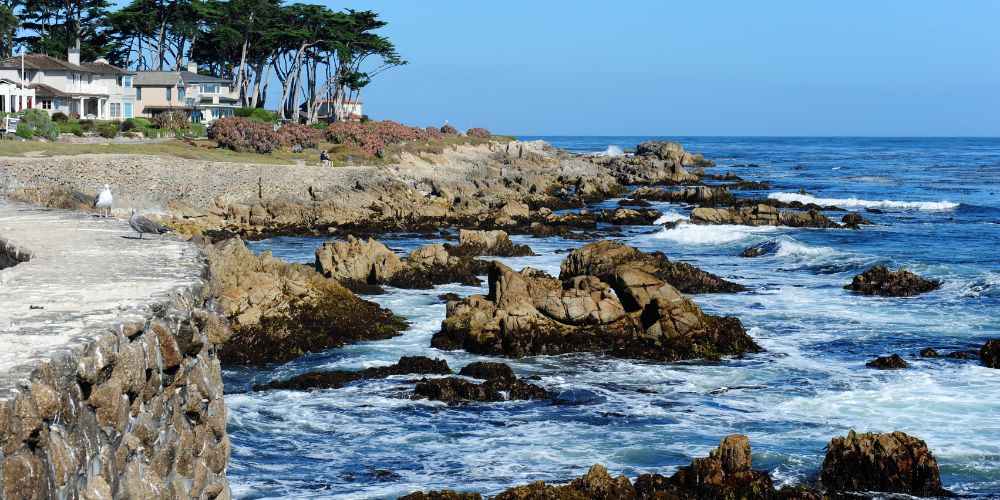
The beaches around Monterey Bay, such as Asilomar, Moss Landing, and Carmel River Bay, are well-known spots for Velella velella sightings. These beaches face open ocean waters, making them directly exposed to the winds and currents that carry the by-the-wind sailors ashore. During spring, nutrient-rich upwelling encourages plankton growth, which attracts more Velella to the region. When the wind direction changes, these floating creatures are pushed toward the shoreline, often arriving in large groups. In recent years, beachgoers have witnessed thousands of them washed up across the Monterey coast, forming shimmering blue lines along the sand. These events often draw visitors and photographers eager to see this rare display of Velella strandings in California in person.
5. Point Reyes National Seashore Beaches

Point Reyes National Seashore is one of the most common places to witness Velella velella strandings along the California coast. Its long, open beaches face directly into the Pacific Ocean, where strong spring and early summer winds often push these tiny by-the-wind sailors ashore. The peninsula’s shape and position make it especially vulnerable to shifting ocean currents, which carry Velella from the open sea toward land. During these events, thousands of bright blue creatures can be seen scattered across the sand, creating what locals call a “blue tide.” Reports from recent years have noted regular ocean currents, Velella California events here, attracting beachgoers and nature lovers eager to experience this fascinating natural sight.
Are Velella Harmful To Humans Or Pets?
For humans, Velella velella are mostly harmless and safe to observe up close. Their stinging cells are very weak and are only used to catch tiny plankton, so they rarely affect people. While most beachgoers will not feel anything after touching one, a few people with sensitive skin might notice mild irritation. It is best to wash your hands after handling them and avoid touching your face or eyes, as this can cause slight discomfort. Even when dried on the sand, their stinging cells can remain active for a short time, so gentle caution is advised. Overall, are Velella safe for humans? Yes, they are, as long as you handle them carefully and avoid direct skin contact.
For pets, however, extra care is needed. Dogs are naturally curious and may try to sniff or eat these washed-up creatures. Eating them can cause mild stomach upset, drooling, or vomiting, especially in smaller pets. If this happens, it is best to give your pet fresh water and monitor their condition closely. In most cases, the reaction is mild, but if symptoms continue, a quick visit to the vet is a good idea. Keeping dogs on a leash and stopping them from eating or rolling in Velella helps ensure Velella pets' beach safety while still enjoying the sight of these bright blue ocean drifters.
Velella’s Role In The Ocean Ecosystem
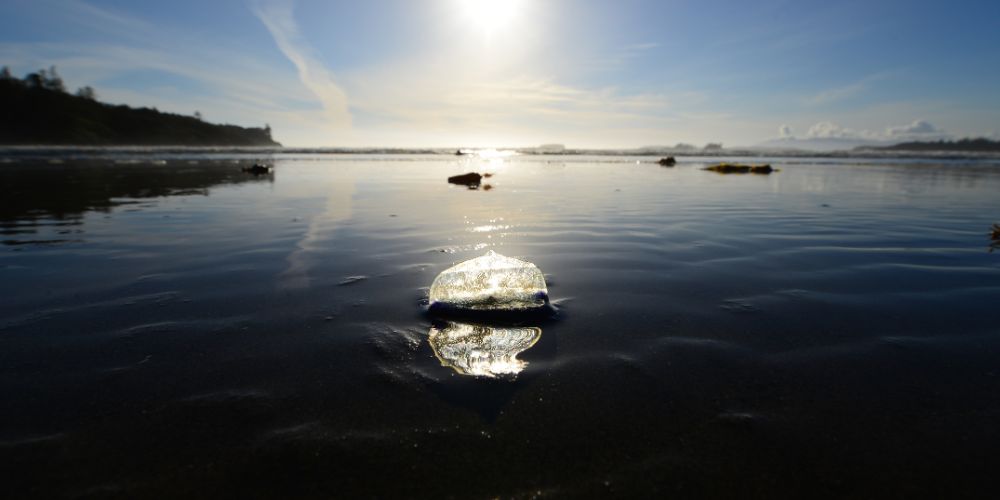
Velella velella plays an important part in keeping the ocean balanced and healthy. Keep on reading to discover more about Velella's role ocean ecosystem and how these tiny drifters support other marine species.
Feeding on plankton: As small surface hunters, the marine life Velella velella feed on zooplankton, larvae, and other small sea creatures near the water’s surface. This helps keep the plankton population in check and supports a balanced food web in open waters.
Food for predators: Many ocean creatures depend on Velella for food, such as sea snails, sea slugs, sunfish, turtles, and seabirds. Their presence supports a healthy chain of life, connecting large and small species together in the open ocean.
Living at the surface: As part of the ocean surface organisms Velella, they belong to a unique community called the neuston, which lives and drifts right at the top layer of the sea. They share this space with other small creatures, forming a floating world full of life.
Providing shelter: Large groups of Velella often float together, creating small moving shelters in the ocean. These floating clusters become safe places for baby fish and tiny marine organisms, giving them both protection and food.
Recycling nutrients: When Velella wash up and break down on beaches, they help move nutrients from the ocean to the shore. This process supports coastal ecosystems by feeding scavengers and enriching the sand with organic matter.
Supporting photosynthesis: Inside their tissues, Velella have tiny algae that make energy from sunlight. This shared relationship gives them extra nutrition and helps them survive even when food is scarce in open waters.
Indicators of ocean changes: Scientists often study where and when Velella appear because their patterns can show changes in wind, ocean currents, and even climate conditions. This makes them natural indicators of how the ocean environment is shifting over time.
When And Where To See Velella
If you have ever wondered when Velella appear, the best time to spot them is usually in late spring and early summer. During these months, strong onshore winds and mild ocean currents push these bright blue drifters toward the coast. They often appear in large groups after a storm or during periods of steady wind. The best beaches for spotting Velella California are usually those that face the open Pacific, as the winds bring them closer to shore. To improve your chances, check local wind and weather forecasts before visiting.
When you head to the beach, go early in the morning when the tide is low and the sand is fresh. Many people enjoy photographing this natural Velella beach event, as their bright blue color looks stunning against the pale sand. Remember to observe them with care and avoid touching or moving them, especially if they are still alive. Leaving them undisturbed helps protect both the creatures and the balance of the coastal ecosystem.
Conclusion
The next time you walk along the California coast, you might spot something truly fascinating — the bright blue Velella drifting ashore. Here you have learned about what Velella are and why they wash up on California beaches. You discovered some of the top beaches where these blue drifters were seen, including Zuma Beach, Bolinas Beach, Pacifica State Beach, Monterey area beaches, and Point Reyes National Seashore. You also learned whether Velella are harmful to humans or pets, their important role in the ocean ecosystem, and when and where they are most likely to appear along the coast. So next time you are by the shore, keep an eye out for these tiny sailors, share a photo, enjoy their beauty, and respect the marine life around you.